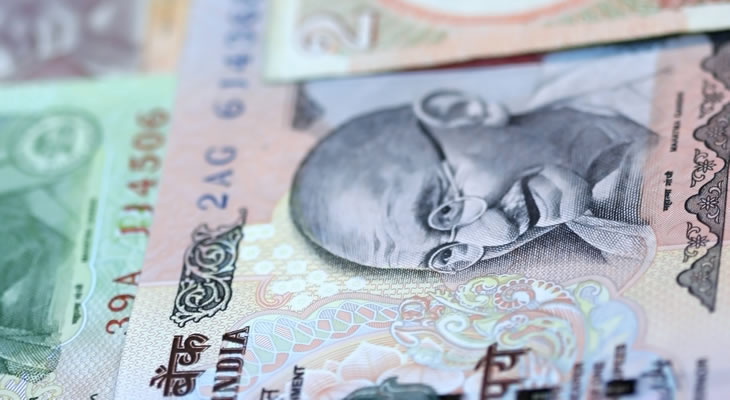The Pound Sterling to Indian Rupee (GBP/INR) exchange rate made advances at the open of Friday’s European session despite UK GFK Consumer Confidence figures falling far lower than economists had forecast.
The index dipped further into contraction at -4 in December from November’s -2.
On Thursday… The Pound Sterling to Indian Rupee (GBP/INR) exchange rate continued to trend lower as Thursday’s European session came to a close as emerging-market currencies gained support from dovish Federal Reserve interest rate hike talk.
Industry expert Hari Chandramgethen stated: ‘The fact that rate hikes will still be data dependent and Fed will be patient is positive for the Rupee.’
Earlier…
The Pound Sterling to Indian Rupee (GBP/INR) exchange rate depreciated in the early part of Thursday’s European session despite a surprising jump in UK Retail Sales which reached a ten-year high.
UK Retail Sales jumped to 6.9% in November on the year, bypassing a 4.5% forecast. Initially, October’s Retail Sales had resided at 4.6% and economists had expected a slight drop. However, October’s figure was positively revised to 4.9%.
This year, the UK adopted ‘Black Friday’, an event traditionally used to kick off the Christmas season in the US. Despite Amazon bringing the event to the UK four years ago, the effect of the annual sale had been rather minimal in comparison to 2014’s result.
The mass sales in electronics and other items saw shops packed with consumers fighting over bargain discounts, resulting in police action in the most extreme cases. Moreover, online sales were also extremely popular with many websites unable to cope with the amount of consumers trying to view the webpage.
Retail Sector director at Lloyds, Keith Richardson, commented: ‘Black Friday’s shopping frenzy provided the sector with a timely boost and retailers will hope that this momentum is maintained throughout the festive period. A combination of aggressive discounting and consumer’s determination to secure big ticket bargains ensures that electrical goods and household appliances were the standout categories.’
However, with UK weather remaining warm well into the autumn/winter period this year, UK retailers have been left with an excess of clothing.
Richardson continued: ‘Clothing and footwear retailers used the event to reduce stockpiles of winter clothing, albeit to the detriment of their profit margins.’
Indian Rupee (INR) Exchange Rate Weakens On Emerging-Market Currency Fears
Meanwhile, the Indian Rupee has fallen in recent weeks as a global slowdown occurs and speculation over interest rate rises has circulated. Many economists were hoping the Federal Reserve would take a step toward hiking borrowing costs on Wednesday—and guess what, they did.
Despite problems in Russia and the Eurozone causing a major drag on global economic health, the Fed made a very small step toward higher borrowing costs with a language change. The Federal Open Market Committee (FOMC) replaced the interest rates will remain low for a ‘considerable time’ spiel, with ‘the committee judges can be patient’ before tightening monetary policy statement instead.
So, it may not have been a massive change, but the currency market has rippled quite significantly. Federal Reserve Chairwoman Janet Yellen stated that she didn’t expect monetary policy to move anywhere in the next few meetings—a development that hawkish economists and investors deemed dovish.
Yellen stated: ‘The statement that the committee can be patient should be interpreted that it is unlikely to begin the normalisation process for at least the next couple of meetings.’
The next couple of meetings are to take place in January and March, taking us up to the end of April before the next potentially exciting summit.
So what does this mean for the Indian Rupee as an emerging-market currency?
The Rupee rose on the Fed’s news, as hypotheses emerged that investor demand for emerging-market currencies would continue until at least April. The Indian Rupee gained by 0.6% to 63.2550 versus the US Dollar on the announcement—the most significant advance in two months.
Industry expert N.S Venkatesh stated: ‘The Fed’s clarification that it won’t be raising rates too soon had comforted the markets. Investors see long-term value in holding Indian debt and the Rupee.’
Pound Sterling to Indian Rupee (GBP/INR), US Dollar to Indian Rupee (USD/INR) Exchange Rate Forecast
In the rest of Thursday’s session US Continuing Claims, Initial Jobless claims, Markit’s Services and Composite Purchasing Managers Indexes and Leading Indicators figures will be out which could cause some US Dollar movement.
Any global developments could also alter the GBP/INR and USD/INR exchange rates.
The Pound Sterling to Indian Rupee (GBP/INR) exchange rate is presently trending in the region of 98.8280 with a market movement of -0.10%. The US Dollar to Indian Rupee (USD/INR) exchange rate is residing at 63.2350.

